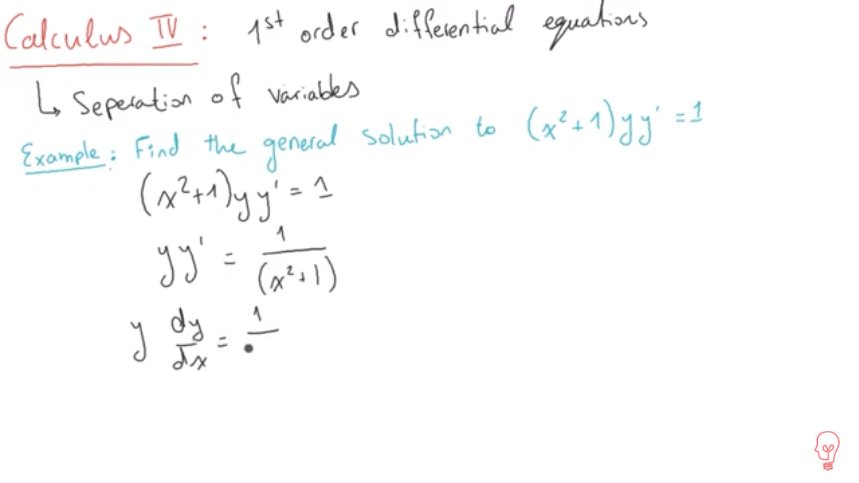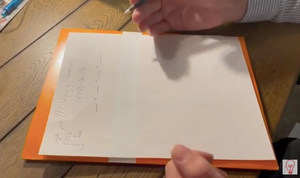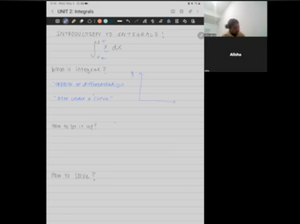In this example, we're going to find a general solution of a first order differential equation. And as you could see in here, this is an example of separation of variables. And the method says that in order to apply this method, we would have to have all the X variables on one side and all the Y variables on the other side.

So in order to solve that, we would start by rewriting the equation. We would have X square plus one times Y . Y prime is equal to one and then taking all the X variables to one side and leaving the Y variables on the other. We would have Y times Y prime is equal to one over X square plus one. And then what we could do, we all know that Y prime is D Y over DX, which is equal to one over X square plus one.
And then taking DX to the other side, we would end up with one over X square plus one DX, and then applying the method of separation of variables. We would be able to integrate the two sides. So why integration of Y D Y is equal to integration of one over X square plus one DX. Then we will we'll know, just by simple integration integration of Y. This is going to be why square over two, which is equal to, and then one over X square. Plus one determine here, as you remember, this is, this is the anti derivative of 10 engine 10 inverse. So that's 10 inverse of X plus C. And then this is our final answer.






